In the paintings of the Middle Ages, much was formulaic, including composition. Most were arrangements rather than compositions, and the demands made by narrative were also limited. As more representational images came into fashion, artists recognised that this had to change. The question was how.
Rather than attempt to survey all the changes in composition which occurred during the Renaissance, a vast topic which appears relatively unexplored, I concentrate here on just two masters and one compositional form. This starts with Leonardo da Vinci in around 1478-81, when he was working on Adoration of the Magi, which he abandoned by about 1482.
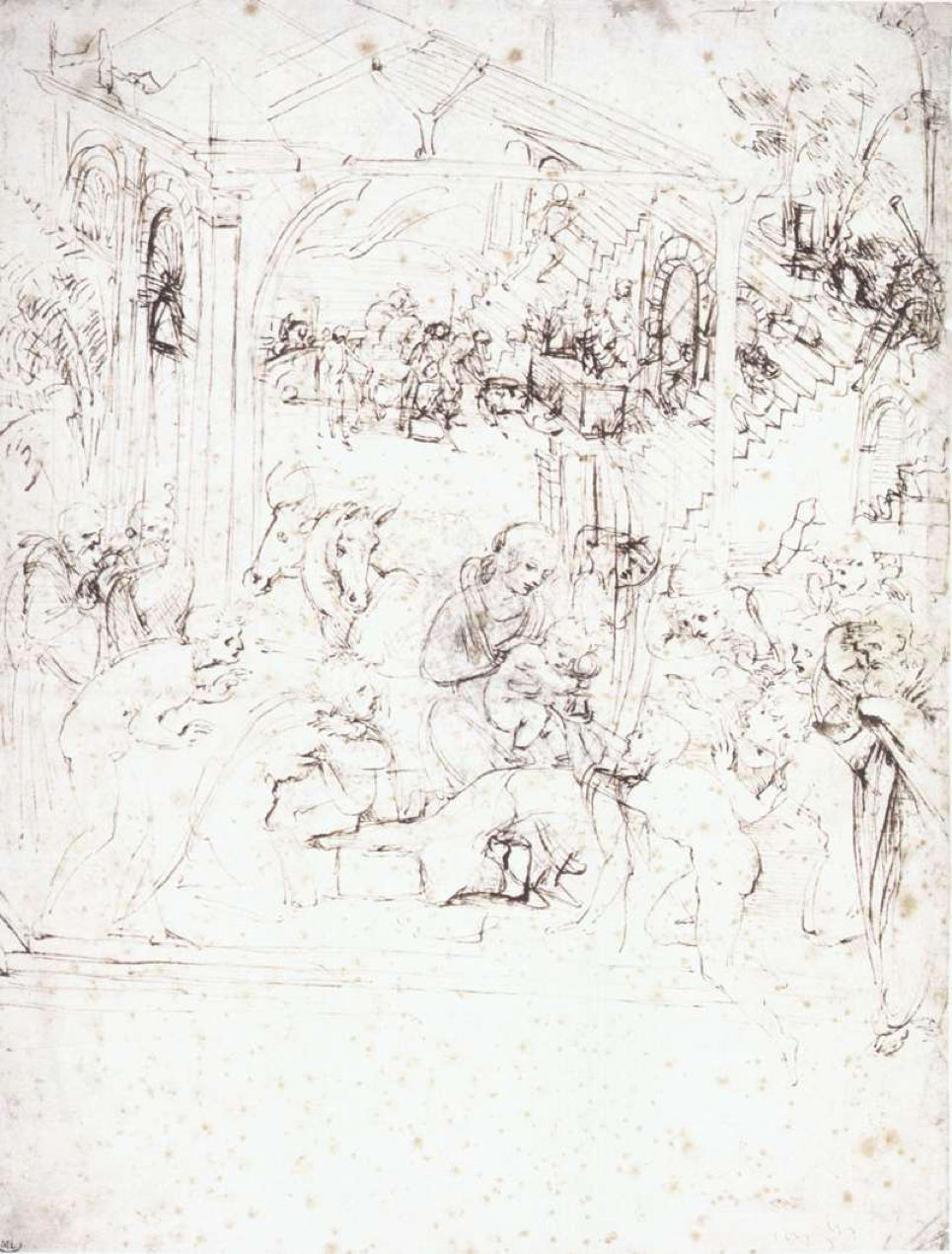
This early design study for the Adoration of the Magi is thought to have been made around 1478-81, and has many close similarities with the painting shown below that Leonardo abandoned in 1482, although he changed his mind about the ruins in the background and added a prominent tree to the right of the Virgin Mary.
Here he was wrestling with a common problem of the day: how to paint a modern work in perspective projection with a previously iconic story, rendered realistically. At this stage, he hasn’t made a clear decision as to whether the centre of attention should be the architectural background, or the foreground figures of the nativity.
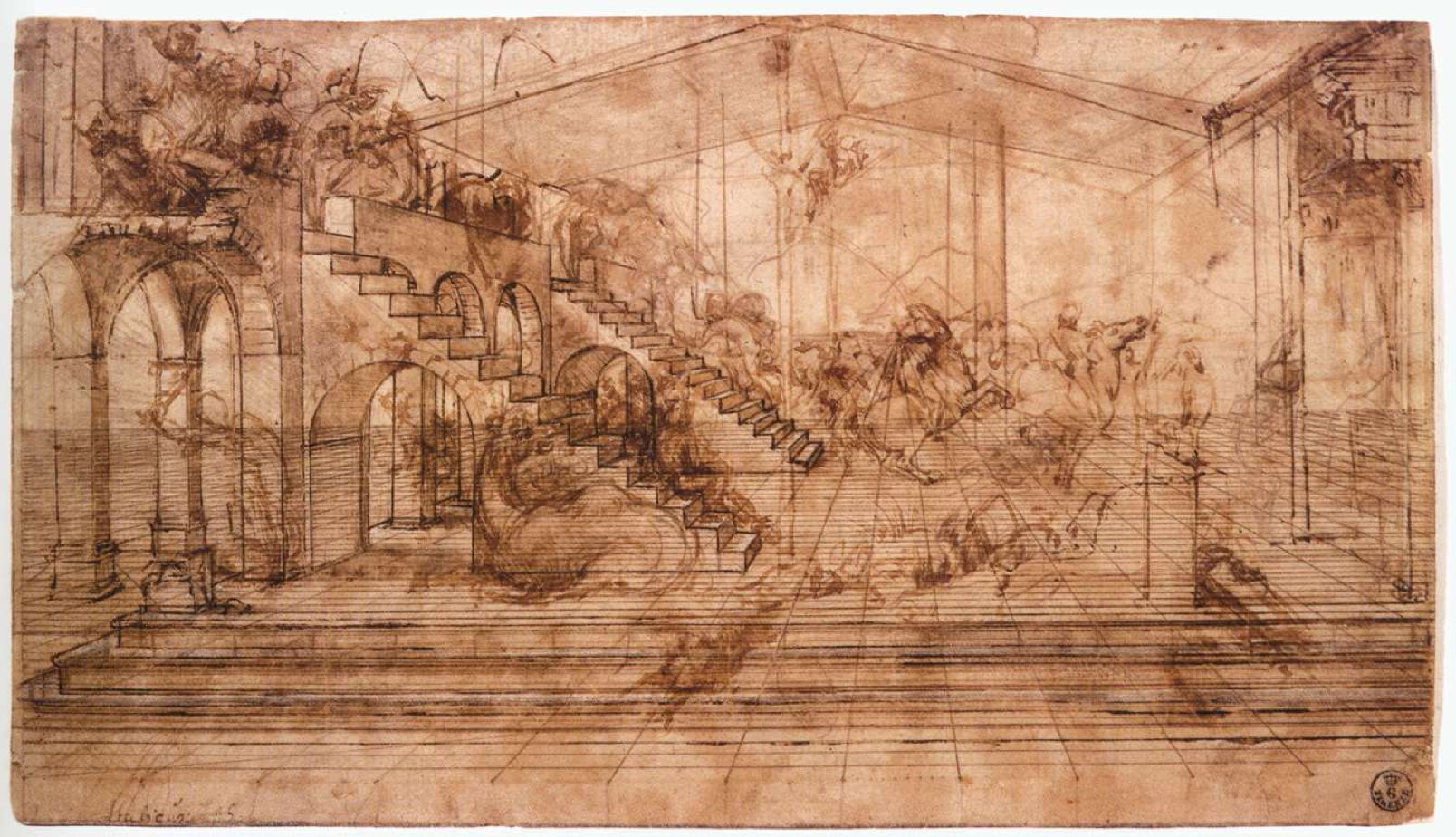
That was probably followed by this perspective study, thought to date from around 1481. The ruins shown in the painting below were thus part of a complete building which Leonardo imagined and projected meticulously before excerpting those fragments which were to be retained in the final work. This may have been intended to represent the palace of King David, which referred to Christ’s lineage.
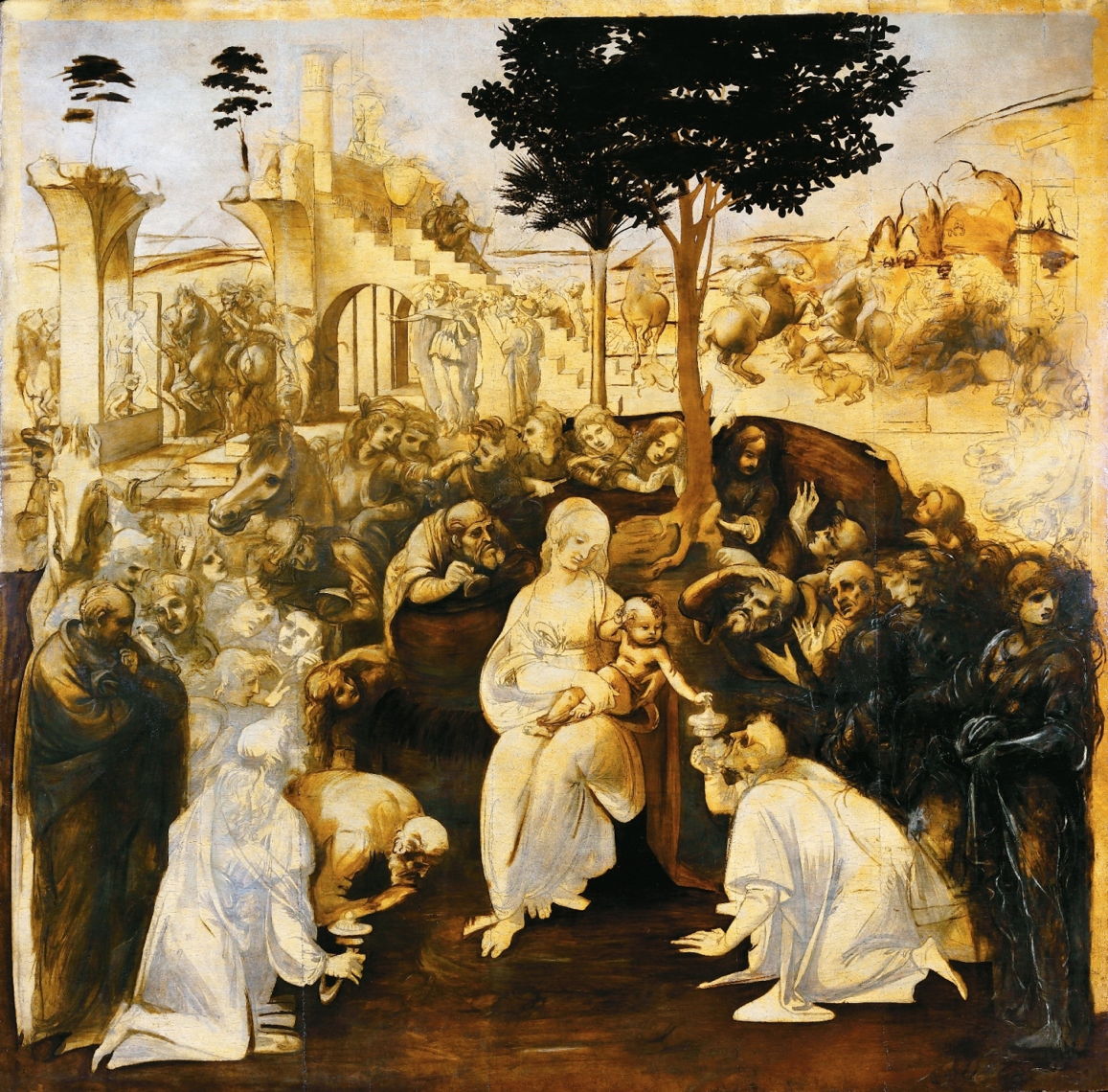
He most probably started the final painting of the Adoration of the Magi in or soon after 1480. At nearly 2.5 metres in each dimension, it was one of his largest and most ambitious works to date, but probably had to be abandoned when he left Florence in 1482. Although greatly improved from the first drawing above, it was perhaps fortuitous that Leonardo left it behind. However, the geometric arrangement of its four key figures seems to have stuck in the artist’s mind for two of his most famous paintings.
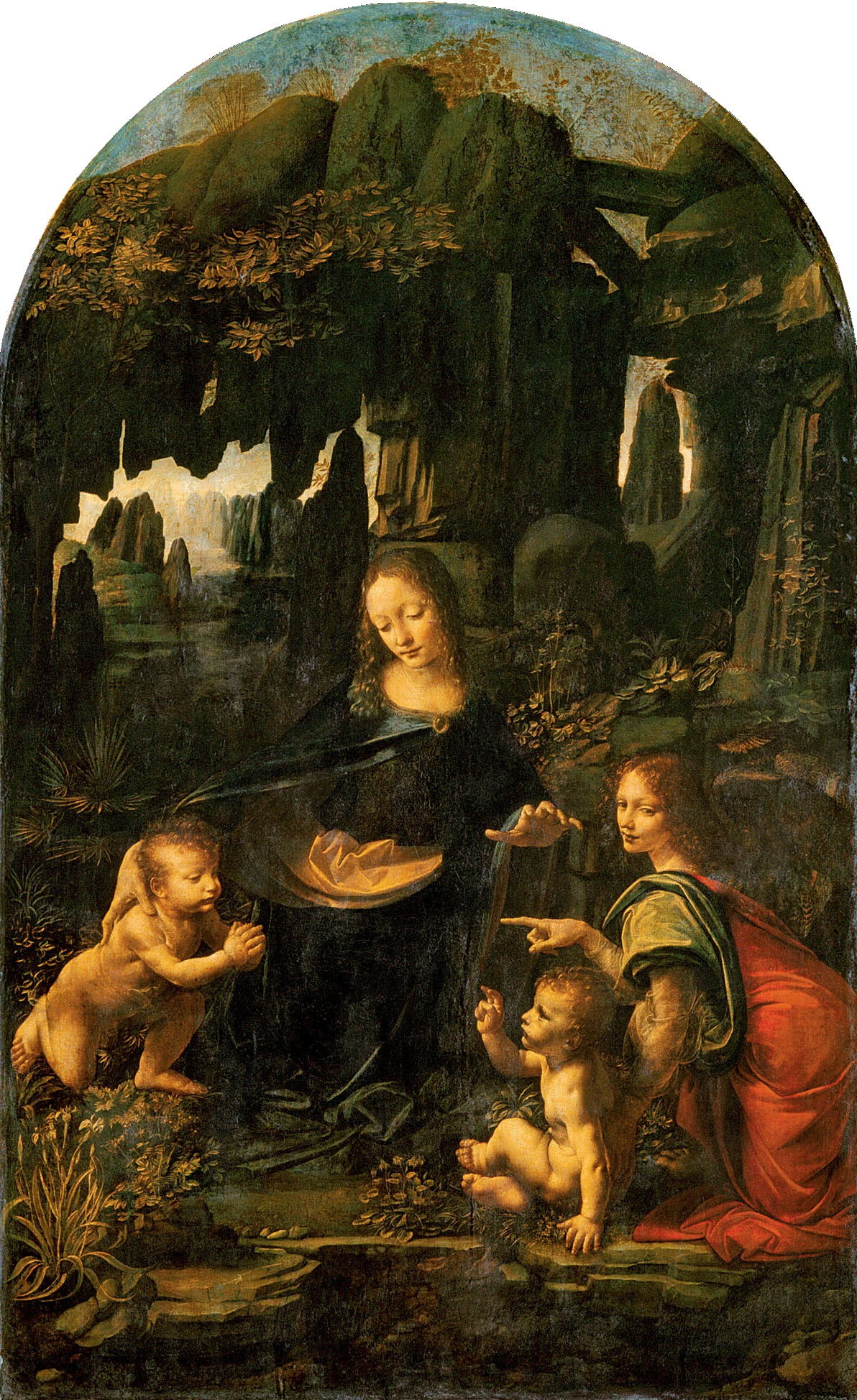
Soon after his arrival in Milan, Leonardo embarked on the first version of one of his most famous paintings: the Virgin of the Rocks now in the Louvre in Paris, which was probably completed between about 1483-85.
Its complex multi-figure composition, set in an elaborately detailed landscape, makes this the most ambitious of Leonardo’s early paintings. The central figure is the Virgin Mary, whose right hand clasps the back of the infant Saint John the Baptist. With her is an angel, whose left hand supports the lower back of the younger baby Jesus.
Looking just at the figures there are many complexities, including the hand positions which direct towards the clasped hands of John, and directions of gaze. As is traditional, the Madonna’s eyes are cast down, but the angel is looking towards the lower right corner of the painting. Christ is distinguished by his right hand held in blessing, and his evident youth compared with the larger John.
His other major painting from this period was the culmination of the commission for the altarpiece of the Confraternity of the Immaculate Conception of San Francesco Grande in Milan: the second version of The Virgin with the Infant Saint John the Baptist adoring the Christ Child accompanied by an Angel, or The Virgin of the Rocks, now one of the diamonds in the crown of London’s National Gallery.

The second version brings significant enhancement with its small improvements in composition and details. These include addition of the crucifix held by the infant John the Baptist, and removal of the palm leaves from the background, whatever they might have signified. What is starting to emerge in these figures is his famous triangle, or pyramid.

Leonardo’s The Virgin and Child with Saint Anne is unfinished in several places, and hasn’t survived the years well. Most striking about this painting is its strongly pyramidal (or triangular) composition, which was to influence several of Raphael’s paintings, and to become one of the defining features of composition during the High Renaissance in Italy.
Almost in continuity with Leonardo’s development of this compositional form, Raphael travelled a similar journey.
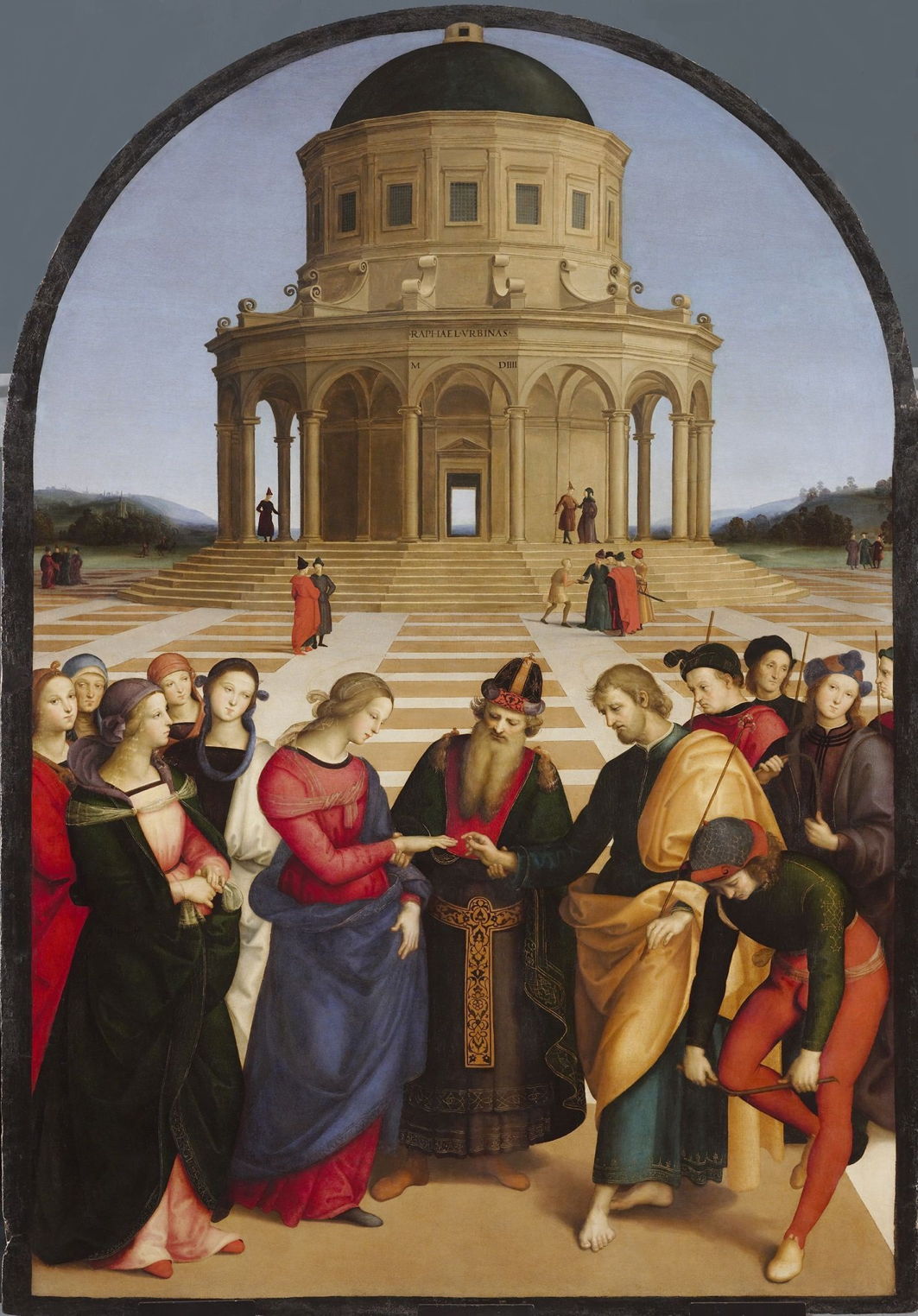
By 1504, when Raphael painted The Marriage of the Virgin, known by its Italian name of Il Sposalizio (‘the marriage’), his composition was dominated by its grand architecture expertly projected in depth. It’s easy to overlook the frieze-like linear arrangement of figures in the foreground, and you have to look twice to distinguish the title lead from among them.

It’s probably Raphael’s Madonna Terranuova, or Mary with the Child, John the Baptist and a Holy Boy from the following year, which shows the first signs of Leonardo’s influence, and is recognisable as one of the first of Raphael’s many distinctive Madonnas. Its four figures are composed into a slightly asymmetrical pyramid, a form which was to recur in many of his subsequent paintings.

Raphael’s Sistine Madonna from 1512-13 is now recognised as one of his greatest and most important paintings. It too is built upon Leonardo’s pyramid or triangle, here featuring two trompe l’oeil cherubs with tousled hair at its foot as gentle touches of humour. The upper reaches of its triangular form are emphasised by the curtains, another part of the trompe l’oeil to fool the viewer into thinking that they were looking at a painting behind real curtains, at least until they got close.
Raphael went on to greater compositional challenges, among them the notorious story of The Judgment of Solomon from the First book of Kings, chapter 3.
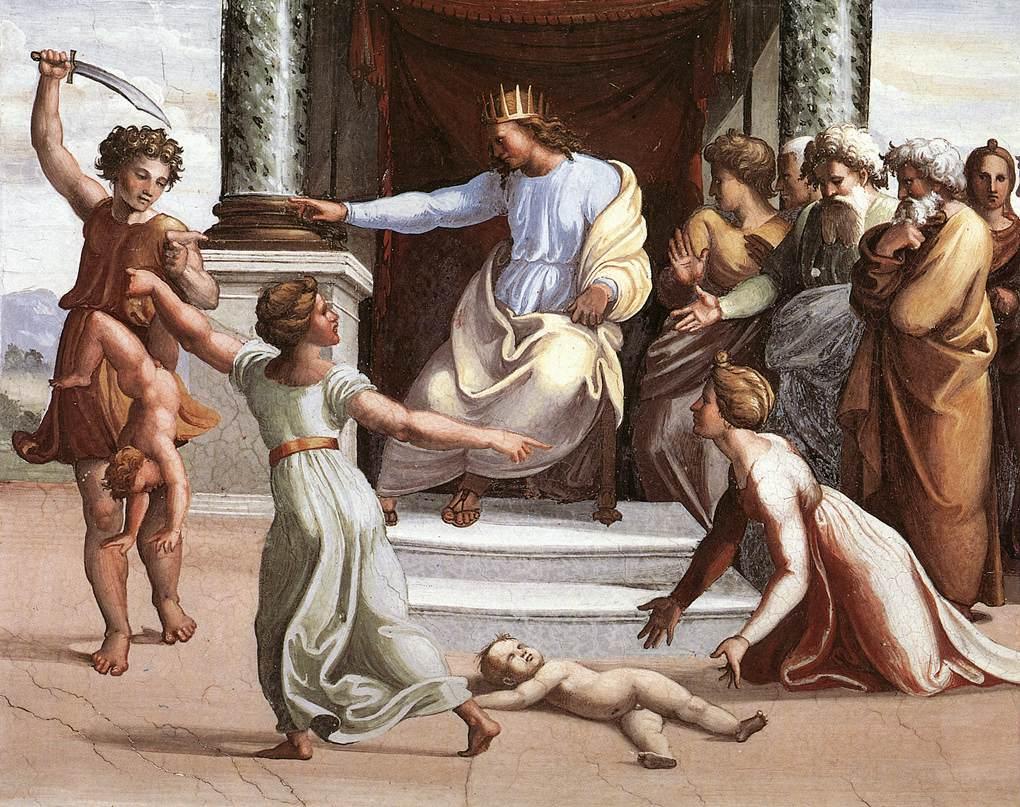
His composition avoids excessive symmetry by putting the courtier who is about to cut the live infant in two, that baby, and the true mother on the left, the dead baby in the middle in front of Solomon, and the false mother and a group of other courtiers at the right. The three key faces (Solomon, the two mothers) are shown in profile, which limits our ability to read their expressions. It shows the peak moment of climax, the sword held aloft and the real mother intervening to save her baby.
It was to be more than a century before Nicolas Poussin devised an ingenious solution to this.

Poussin’s famous painting of 1649 uses similar composition to Raphael’s, the mothers and their actions preventing it from becoming too symmetrical. Although timed slightly before the sword is raised, he depicts the body language extremely clearly. Solomon’s hands indicate his role as the arbiter, in showing a fair balance between the two sides.
The true mother, on the left, holds her left hand up to tell the soldier to stop following the King’s instructions and spare the infant. Her right hand is extended towards the false mother, indicating that she has asked for the baby to go to her rather than die. The false mother points accusingly at the child, her expression full of hatred. The three key figures and their arms once again form Leonardo’s pyramid, one of the everlasting gifts of the Renaissance.

